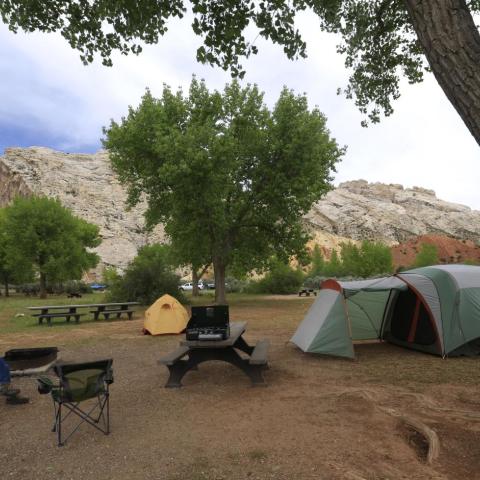With the Trump administration pushing not just for energy independence, but "energy dominance," the U.S. Bureau of Land Management has been lining up a number of oil and gas lease auctions in the West, including some near Dinosaur National Monument, Hovenweep National Monument, and Chaco Culture National Historical Park.
The auction for leases near Dinosaur, located in northeastern Utah and northwestern Colorado, is set for this fall and have drawn concern from Utah politicians, who fear any production on the leases could impact tourism to the national monument.
Meanwhile, the BLM last week announced plans to move forward with a pair of oil and gas lease sales that National Parks Conservation Association staff maintain could adversely impact Chaco Culture National Historical Park in New Mexico and Hovenweep National Monument in southeastern Utah.
In New Mexico, the leases near Chaco Culture National Historical Park are within an existing planning effort between BLM and the Bureau of Indian Affairs to consider the leases with the needs of local communities, their religious practices, and protection of their sacred sites and heritage.
“The proposed parcels near Chaco are nibbling away around the edges of the national park and are disturbingly close to significant cultural features and ancestral sites,” said Ernie Atencio, NPCA's New Mexico program manager. “Both the Navajo Nation and the All Pueblo Council of Governors have made clear their opposition to oil and gas development in this area. The lease sales in New Mexico should be on hold until the public has an opportunity to help guide how to protect public lands near Chaco from incompatible development.”
The San Juan County, Utah, leases are within the planning area of the BLM's San Juan Master Leasing Plan. The National Park Service, NPCA, and others have spoken out about the harmful effects on night skies, the natural soundscape, clean air and cultural resources that oil and gas exploration and production could have on national park sites like Hovenweep, Canyonlands, Arches and Natural Bridges going back to a 2015 BLM lease sale.
Numerous parcels in the 2015 sale were ultimately deferred because of the concerns about cultural resources in the area. But the Canyon Country district office’s EA recommendations for its March 2018 lease sale does not alleviate any of that unease, said NPCA.
“Many of the parcels proposed ... by the BLM are in the same area as those deferred in 2015. NPCA remains concerned that the EA doesn't protect for night skies, natural sound, clean air and cultural resources in and around our national parks. It is irresponsible to go forward with leasing these parcels when, to date, little has been done to address these real problems that were raised originally and that could spoil our southeastern Utah national parks and the larger cultural landscape,” said Erika Pollard, NPCA’s Utah Senior Program Manager.
Conflicts commonly arise where energy exploration and production occurs on public lands sharing a landscape with national parks, outdoor recreation economies, and other uses. Public stakeholder processes, which seek to find solutions before leasing occurs, are a proven solution to avoid conflicts.
Meanwhile, the federal government appears to be undervaluing the return it should receive on oil and gas leases, according to a Government Accountability Office report.
"While the federal royalty rates for coal production are generally the same or higher than state rates, federal rates for oil and gas production are generally lower than state rates," the GAO report issued in June said.
Raising the federal royalty rates to nearly twice the current 12.5 percent rate would have little effect on production, the report added.
"One study GAO reviewed found that oil and gas production could decrease by less than 2 percent per year if royalty rates increased from their current 12.5 percent to 22.5 percent, based on fiscal year 2016 production data," read the report. "Another study stated the effect on production could be 'negligible' over 10 years if royalty rates increased to 18.75 percent, particularly if the increased federal royalty rate remained equal to or below the royalty rates for production on state or private lands."
While the federal goverment charges a 12.5 percent royalty on oil and gas leases -- even though it's allowed to assess a higher royalty -- the state of Colorado charges 20 percent, Montana 16.67 percent, New Mexico up to 20 percent, North Dakota 16.67 or 18.75 percent, and Utah and Wyoming both 12.5 to 16.67 percent, the GAO noted.


 Support Essential Coverage of Essential Places
Support Essential Coverage of Essential Places







Add comment